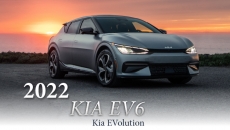While Honda has a long reputation for building fuel-efficient cars and trucks, it’s only now getting serious about EVs with its new 2024 Prologue. The Prologue is an all-electric SUV that seats five and is about the same length as a Honda Passport. Interestingly, Honda expedited its entry in the electric SUV arena by borrowing off-the-shelf EV know-how from General Motors. The Prologue shares its battery, motors and many of its features with the Chevrolet Blazer EV.
Toyota is in a similar situation. It co-engineered its first mass-produced EV, the bZ4X, with Subaru. The 2024 bZ4X builds on last year’s debut with a few improvements such as longer range and quicker charging. And like the Prologue, the bZ4X has two rows of seating, available all-wheel drive, and a long roster of tech features. Which one is the better buy? The auto experts at Edmunds pitted them against each other to find out.
Range and Charging
The single-motor front-wheel-drive Prologue is the one to get if range is a priority. According to EPA estimates, the Prologue’s maximum range is 296 miles on a full charge. All-wheel-drive models are slightly less at 273-281 miles, depending on trim. In the independent Edmunds EV Range Test, a dual-motor Elite model exceeded its EPA estimate, impressively going 320 miles on a full charge.
The Toyota’s range varies from a low of 222 miles in the dual-motor Limited trim with all-wheel drive to a max of 252 miles in the single-motor XLE. This figure falls short of range in the Prologue and most similarly sized electric SUVs. The bZ4X exceeded its estimated range in Edmunds’ testing, though it still came up well short of the Prologue.
Things tighten up when it comes to charging speed. Plan on approximately 30 minutes to charge either EV from a low battery up to about 80% at a public fast-charging station under ideal conditions. You should also be able to easily fully charge these EVs at home and overnight when using a 240-volt power supply. But overall the Prologue’s longer range is a big advantage.
Winner: Honda Prologue
Performance and Comfort
The Prologue and bZ4X have similar performance. Alas, this isn’t entirely good. Even in their most powerful configurations, acceleration is leisurely for an EV. Key competitors, such as the Ford Mustang Mach-E and Tesla Model Y, are considerably quicker.
Considering it wears a Honda badge, the Prologue’s ho-hum handling and firm ride are disappointing. On the plus side, the Honda’s adjustable brake regeneration allows for one-pedal driving that brings the SUV to a complete stop without touching the brake pedal.
The bZ4X’s regenerative braking awkwardly requires the driver to still use the brake pedal to come to a full stop. Working in favor of the Toyota are its more supportive front seats and its more comfortable ride over bumps.
Winner: tie
Interior and Utility
The Prologue and bZ4X don’t raise the bar for EV interior design, yet they’re generally well thought out and feature touchscreens with large icons and intuitive menus. With its Google-based infotainment system, the Prologue offers perks like Google Maps navigation and the Google voice-based Assistant app. You don’t get those features on the bZ4X, but its infotainment system is still easy to use.
The Prologue has more legroom in its second row than the bZ4X. This can be advantageous if you frequently have passengers aboard or small children in safety seats. For the bZ4X, it boasts better outward visibility as well as a bit more cargo space. Still, neither is as roomy for cargo as a Honda CR-V or Toyota RAV4, and neither has a front trunk like a Tesla Model Y.
Winner: tie
Pricing and Value
The Prologue starts at $48,795, including destination charges, for the EX trim. It then tops out around $60,000 for the Prologue Elite. That’s quite a bit more than what Toyota charges for the bZ4X. The base XLE is $44,465 and the Limited is $48,575. The amount of comfort and technology-related features found on each is similar. The Prologue qualifies for the full federal $7,500 EV tax credit, and both EVs are often eligible for regional leasing deals. In general, though, you’ll pay less to drive the bZ4X.
Winner: Toyota bZ4X
Edmunds Says
The Honda Prologue and Toyota bZ4X should each satisfy brand loyalists. They’re also pretty evenly matched. But ultimately Edmunds thinks the Prologue is the better buy because of its better range and roomier seating.






